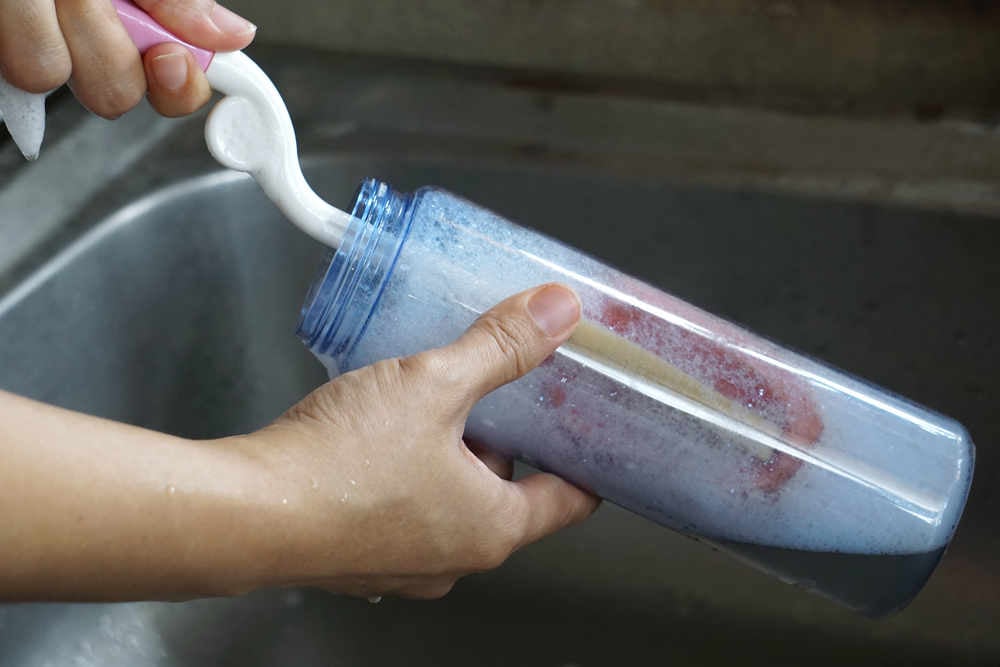
We recently told you about types of reusable water bottles that are the best way to save money and reduce waste while still enjoying great-tasting filtered water. But, even the fanciest of canteens won’t do you much good if you don’t clean your bottle properly.
Used water bottles can harbor a plethora of germs if not cleaned out on a regular basis. Bacteria loves to collect in moist environments. Some studies have even shown the presence of E.coli and salmonella in unwashed water bottles.
Never fear – we’re here to offer some simple cleaning tips that will keep your health in-check and preserve the integrity of your filtered water so you can hydrate confidently and safely.
While dishwashing works well for glass water bottles, we recommend hand washing for metal, plastic, or mixed-medium bottles as it will help extend the life of the colors and designs. Handwashing is also best for bottles with smaller mouths or more intricate tops to ensure all areas are properly cleaned.
How to Best Clean Your Reusable Water Bottle
What You’ll Need:
- Your bottle
- Cleaning Tools:
- Pipe cleaners
- Bottle brushes
- Soft bristle toothbrush
- Standard sponges
- Make sure your tool is small enough to get in all your bottle’s hard-to-reach spaces!
- Gloves (optional)
- Hot water
- Cleaning Solutions:
- White vinegar and baking soda is a highly recommended option.
- Cleansing tablets, denture cleaner, and mild dish soap are also good options.
- Some companies even make specialty bottle cleaning products, but these aren’t typically necessary.
- NOTE: While bleach is sometimes recommended, this harsh chemical can be dangerous to work with, plus it can damage colors and designs. Also, NEVER mix vinegar with bleach.
Steps:
- Pour the cleaning solution of choice into your water bottle with hot water.
- If using white vinegar and baking soda, dilute 1-2 tablespoons of vinegar per cup of hot water and add a few tablespoons of baking soda, depending on the size of your bottle.
- Let it sit for at least 15 minutes.
- Don’t seal and shake, especially if using vinegar and baking soda (remember your baking soda volcano at the science fair!) but do soak the bottle’s cap.
- Use the cleaning tool of your choice to clean out all your bottle’s nooks and crannies, including in the threading if the bottle has a twist top. This is where most germs can collect so don’t forget this part.
Tips for Metal: Non-abrasive pipe cleaners or a soft bristle brush work best on metal bottles. Anything too abrasive can scratch off colors or coatings, especially for colored aluminum or stainless steel bottles.
Tips for Plastic: Plastic – no matter if BPA/BPS-free - retains stronger smells than metal bottles. Try soaking the bottle overnight to eliminate any unpleasant odors.
Be sure to clean your bottles a minimum of once per week, as well as empty, rinse and dry after daily use to keep you and your wallet and body healthy and happy! Keeping your bottle clean is just as important as what you put in the bottle. Get the best-filtered water with The Perfect Water today.

